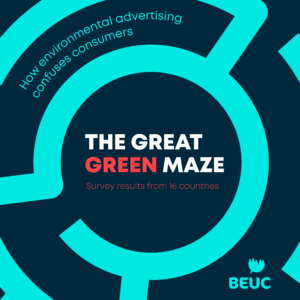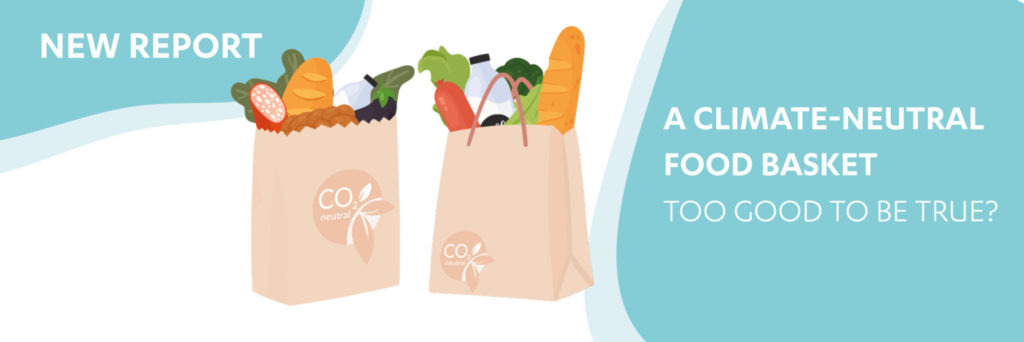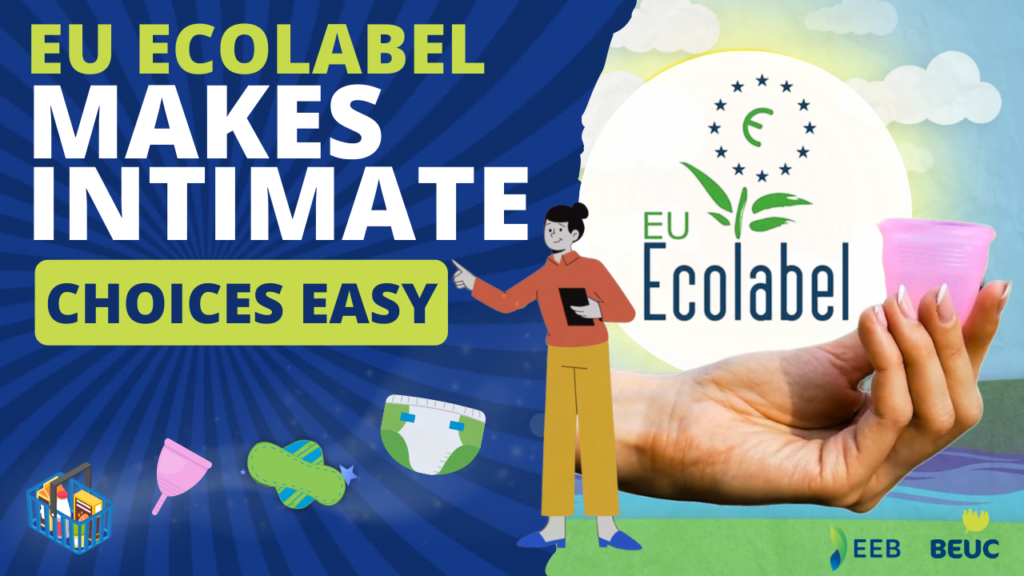BEUC still remembers a time when Santa Claus was green…[1] But even this mythical character has struggled to keep track of his ecological footstep and at this point has no clue on how to instruct his elves to choose sustainable gifts. Luckily, BEUC is here to help, promoting healthier, greener and more responsible consumption that can help even the most magical of consumers.
Misleading green claims are everywhere
The holiday season is not exactly the best time for sustainable consumption. In 2019, the average household in Europe spent €460 for Christmas celebrations[2] including food and gifts. And even if families want to make more sustainable choices, misleading green claims make it difficult for them to make an informed choice.
Consumers are overwhelmed with the amount of green advertising and know very little about the reliability of green claims.[3] Our November study – together with ICRT – revealed that one in four Europeans look for environmental information when making purchasing decisions but two out of three report to know very little about requirements companies have to follow to use green claims.
It is fair to say that in some cases, consumers would need Santa’s magical powers to understand which green claims are false or true.
False green claims are present even on the most common of trips to the supermarket. In March, BEUC and eleven of our members highlighted how frequently misleading climate neutrality claims are being used on foods and drinks in the EU. In our report, we showed how these claims are scientifically inaccurate, based on dubious carbon offsetting schemes and give a false impression to consumers that food products bearing “carbon neutral” labels are a good choice for the climate.
As you set your table for the holidays, remember that there is simply no such thing as “carbon neutral” cheese or bubbly wine!
Greenwashing affects the finances of consumers in many ways. Even ‘green’ or ‘sustainable’ investments or financial products are often in fact greenwashing. This can lead consumers into buying something they would not buy if they had access to independent, accurate information or if they would be able to rely on trustful labels.
Raising awareness about truly sustainable products
How can consumers then make responsible decisions? Only a mere 3% of Europeans say they would be able to always distinguish greenwashing and 35% of consumers wrongly believe that all green claims and labels are verified.[3]
Trustworthy information is crucial. For many years, BEUC has been involved in the EU’s official label of environmental excellence: the EU Ecolabel. This year, we have contributed to the new rules for EU Ecolabel hygiene products and reusable menstruation cups have joined the scope.
Making products last longer is another major piece of the sustainable lifestyle puzzle. In early December the EU adopted new Ecodesign rules that BEUC has long asked for. Thanks to them, our products will become more repairable and durable by design. And unsustainable – not to say ‘appalling’! – practices, such as the destruction of unsold textile and footwear items, will get banned.
Tackling greenwashing practices on the ground
Greenwashing is a problem that knows no boundaries. BEUC collaborates with its members alerting consumer authorities across Europe about traders’ unfair commercial practices (what we call ‘CPC alerts’).[5]
While Santa goes around on his magic sleigh, most people travelling back home for the holidays don’t have such an efficient carbon-neutral choice. This is a moment of intense air travel, where consumers are often faced with misinformation. In June 2023, with 23 members of our network we issued a complaint against 17 airlines for greenwashing. We have identified numerous examples of claims for example stating that paying extra credits can “offset” the CO2 emissions of a flight, which is factually incorrect.
Greenwashing doesn’t stop at air travel, and can be found on the most mundane items, such as plastic water bottles. It is impossible for a water bottle to be made from 100% recycled materials. Nevertheless, the beverage industry resorts to recyclability claims that are vague or inaccurate. In November, BEUC and 15 members reported to EU authorities misleading commercial claims about the recyclability of their products by major drinking water bottle traders, such as Coca-Cola, Danone and Nestlé Waters/Nestlé.
Advocating for stronger EU rules against greenwashing
All the above guided our advocacy work towards stricter rules against unfair greenwashing practices, helping us convince the EU legislators to ban carbon neutral claims. As of 2026, the Directive on Empowering Consumers for the Green Transition will make these claims become past history.
But our work is not over yet.
2024: what’s around the (green) corner?
The fight against greenwashing is not a sprint, it’s a marathon.
2024 will set BEUC up for more challenges. Political negotiations on the Green Claims Directive are expected to last until well after the EU elections. We will continue advising EU policymakers on how to prevent greenwashing and encourage promoting trustworthy labels. We will also continue working relentlessly on further developing and promoting the EU Ecolabel.
BEUC will work with policymakers on sector-specific initiatives, such as CountEmissionsEU – an initiative which would allow consumers to have an official comparison of the environmental impact of different transport modes. And we hope to push the European Commission to deliver on its promise to revise the outdated car labelling directive.
The road to truly sustainable lifestyles may be a long one to pave but 2023 has undoubtfully set important foundations. With all these exciting opportunities, even Santa will finally be able to instruct his elves for sustainable purchases!
[1] The first appearance of a modern Santa Claus, complete with what we consider to be the Santa suit was in drawings by Thomas Nast. Before his illustrations, during the Victorian period, Santa was often depicted wearing all manner of different colours – white, blue, brown and, of course, green. In 1931 Coca-Cola first used Santa on their advertisements, with artist Haddon Sundblom making only one major change to his iconic portrayal by Thomas Nast: they switched his pipe to a glass bottle of Coke. Prior to the Coca-Cola advertising, the image of Santa was more flexible and he would appear in many shapes and forms. More information available here: https://en.wikipedia.org/wiki/Santa_suit and https://www.thefactsite.com/how-coca-cola-changed-santa/
[2] https://www.statista.com/statistics/475509/christmas-budget-europe-by-country/
[3] The Great Green Maze https://www.beuc.eu/sites/default/files/publications/BEUC-X-2023-149_The_Great_Green_Maze_How_environmental_advertising_confuses_consumers.pdf
[5] The CPC-Network is the network gathering national consumer protection authorities in the EU and can undertake coordinated enforcement actions to protect consumers in case of EU wide law infringements.






